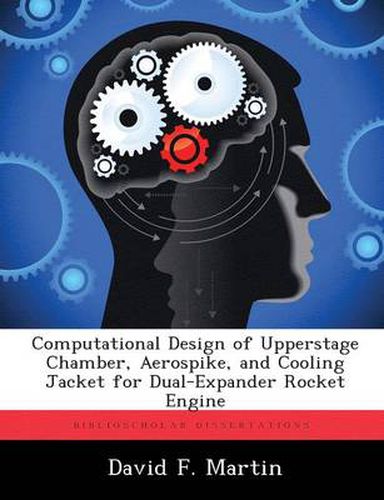Readings Newsletter
Become a Readings Member to make your shopping experience even easier.
Sign in or sign up for free!
You’re not far away from qualifying for FREE standard shipping within Australia
You’ve qualified for FREE standard shipping within Australia
The cart is loading…






This title is printed to order. This book may have been self-published. If so, we cannot guarantee the quality of the content. In the main most books will have gone through the editing process however some may not. We therefore suggest that you be aware of this before ordering this book. If in doubt check either the author or publisher’s details as we are unable to accept any returns unless they are faulty. Please contact us if you have any questions.
To increase the performance of the current US satellite launch capability, new rocket designs must be undertaken. One concept that has been around since the 50s but yet to be utilized on a launch platform is the aerospike, or plug nozzle. The aerospike nozzle concept demonstrates globally better performance compared to a conventional bell nozzle, since the expansion of the jet is not bounded by a wall and therefore can adjust to the environment by changing the outer jet boundary. A dual-expander aerospike nozzle (DEAN) rocket concept would exceed the Integrated High Payoff Rocket Propulsion Technology initiative (IHPRPT) phase three goals. This document covers the design of the chamber and nozzle of the DEAN. The validation of the design of the DEAN are based on the model in Numerical Propulsion System Simulation (NPSS TM), added with the nozzle design from Two-Dimensional Kinematics (TDK 04TM). The result is a rocket engine that produces 57,231 lbf (254.5 kN) of thrust at an Isp of 472 s. Additionally, the oxygen wall is made of silicon carbide, with a melting point of 5580 R (3100 K), and has a maximum temperature at the throat of 1625 R (902 K).
$9.00 standard shipping within Australia
FREE standard shipping within Australia for orders over $100.00
Express & International shipping calculated at checkout
This title is printed to order. This book may have been self-published. If so, we cannot guarantee the quality of the content. In the main most books will have gone through the editing process however some may not. We therefore suggest that you be aware of this before ordering this book. If in doubt check either the author or publisher’s details as we are unable to accept any returns unless they are faulty. Please contact us if you have any questions.
To increase the performance of the current US satellite launch capability, new rocket designs must be undertaken. One concept that has been around since the 50s but yet to be utilized on a launch platform is the aerospike, or plug nozzle. The aerospike nozzle concept demonstrates globally better performance compared to a conventional bell nozzle, since the expansion of the jet is not bounded by a wall and therefore can adjust to the environment by changing the outer jet boundary. A dual-expander aerospike nozzle (DEAN) rocket concept would exceed the Integrated High Payoff Rocket Propulsion Technology initiative (IHPRPT) phase three goals. This document covers the design of the chamber and nozzle of the DEAN. The validation of the design of the DEAN are based on the model in Numerical Propulsion System Simulation (NPSS TM), added with the nozzle design from Two-Dimensional Kinematics (TDK 04TM). The result is a rocket engine that produces 57,231 lbf (254.5 kN) of thrust at an Isp of 472 s. Additionally, the oxygen wall is made of silicon carbide, with a melting point of 5580 R (3100 K), and has a maximum temperature at the throat of 1625 R (902 K).